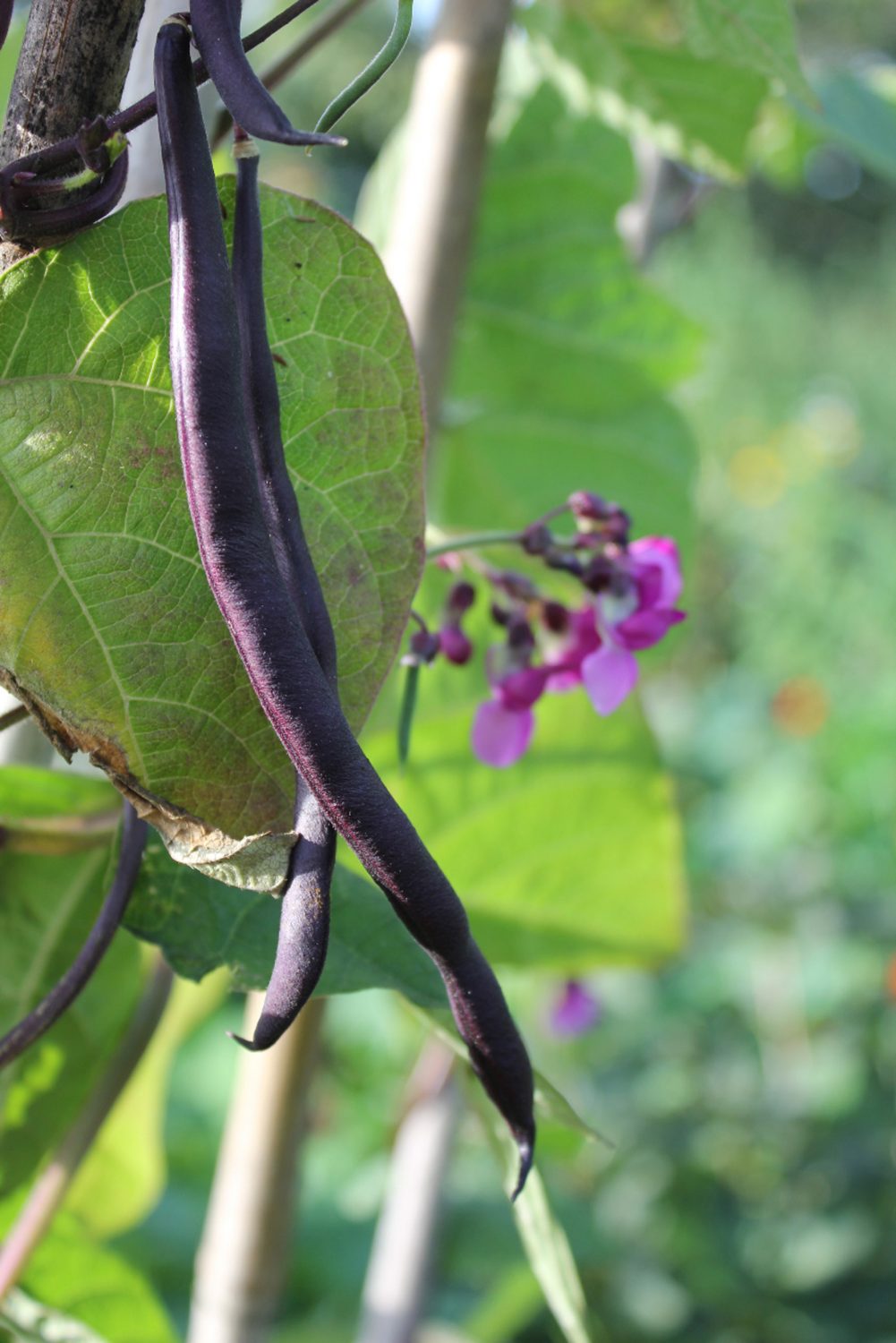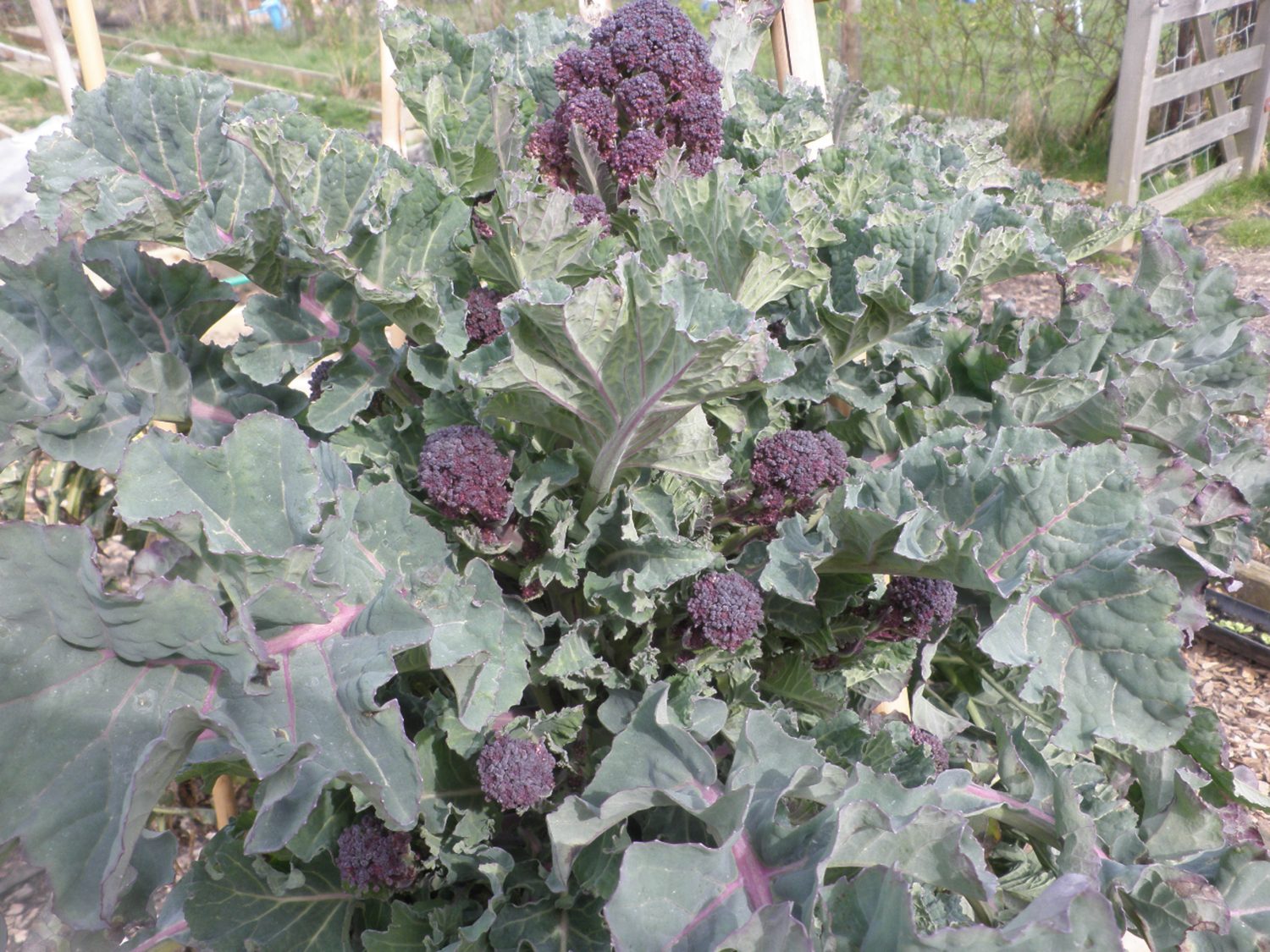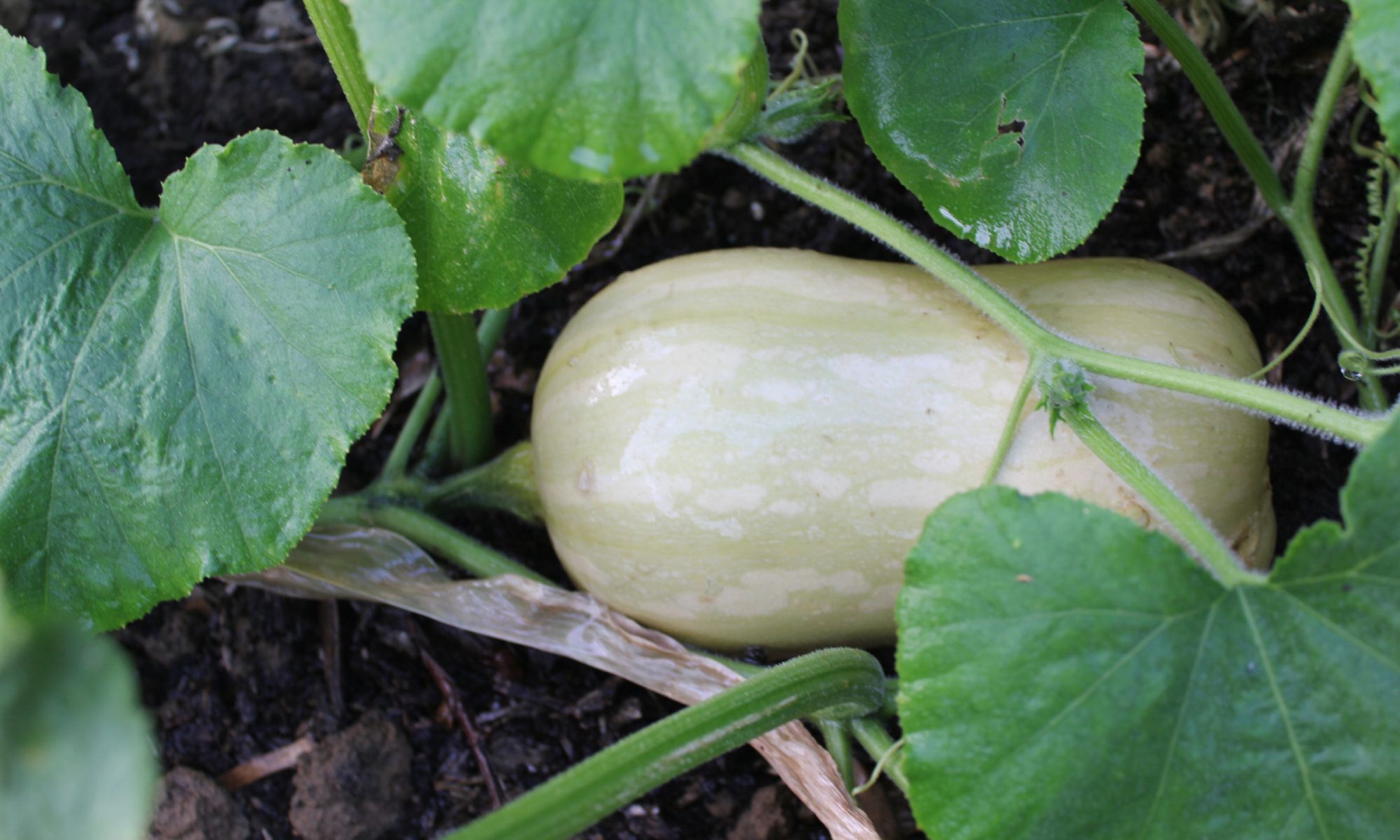The early rush is over – peas, carrots, beetroot and broad beans could well be growing away nicely in your plot (if not, just throw some in now and they’ll do their best to catch up). The weather is warming and there might be no more frosts (but you know the old saying about not casting clouts*, whatever they are, ‘’til May is out’). Tender vegetables can probably be sown directly outside now, or planted out, if you’ve already sown them under cover. We do have a hosepipe ban, but if you’re careful (and the outside tap isn’t too far from your patch) you shouldn’t need to worry too much. I try to only water things that are establishing and then later on crops that need water to swell their pods and fruits (but even then only if the weather’s dry). Watering with a large can directly where the plants need it won’t take much longer than watering with a hose. Plants don’t need water every day; in fact a good soaking once a week is preferable to little and often, which won’t get down to the roots. Here’s a selection of five good crops to sow in May:
Courgettes… Even if you really love courgettes you’ll only need one plant to keep you (and the rest of the neighbourhood) supplied for the summer. Sow three seeds just to make sure that at least one will germinate and then throw at least one away (or donate to someone unsuspecting). The seeds of pumpkins, squash and courgettes are large and flat. Sow them on edge (thin side first) – just push them down into the soil and keep them warm and moist. There are quite a few varieties to try – I particularly like a climbing type called Trombocino, which can be grown up an obelisk. The fruits are long and are mainly stalk, so they don’t go so mushy when you cook with them.
Sweetcorn… Once you have tasted your own home grown super-sweet sweetcorn (picked as the cooking water comes to the boil), you may never be able to eat ‘fresh’ supermarket corn cobs again. There are some good varieties around, usually with the word ‘sweet’ in their name. The reason you should cook and eat sweetcorn as soon as you have picked it is because the sugars turn to starch very quickly and it loses its wonderful sweet flavour and starts to taste woody (the same thing happens with peas). Sow or plant out sweetcorn in a grid formation, not in a long row, as they are wind pollinated and stand more chance of successful pollination grouped together in a square. They’re a hungry crop and need a rich, well composted soil. The corn is ready to pick when the tassles have turned brown – you can also do the fingernail test – peel back a little of the husk on the cob and push your nail into a kernel. If the fluid inside is milky, it will be ready to pick.
French Beans… Everybody at our house likes French beans so I put out the flags (hurrah!) and sow them at least twice (although you can probably get to the end of the season with one lot – just ask yourself; how much do I like beans?). I often sow dwarf beans as the second crop as they tend to be a little quicker than climbing varieties. The last sowing should be no later than July (June for runners) to ensure the beans ripen before the first autumn frosts. Good climbing varieties to try: Cobra, Blue Lake.
Pumpkins and Squash… Some will turn into enormous sprawling plants that will swamp your entire veg patch in an alarming triffid-like way, so be careful where you plant them and make sure they have enough space to grow. The smaller squashes can be grown up sturdy obelisks or arches, but the larger ones just need space to ramble along the ground, as their fruits can be too heavy for the stem. You may see pumpkins and squash being grown on large compost heaps, which suits them very well, as they need rich deep soil – and the warmth of the heap will also help with growth and ripening. Butternut and Winter squash are easy to grow and will keep for weeks after harvesting – make sure you allow the skin to ‘cure’, or harden in the sun to prolong their storage life. The smaller pumpkins are the tastiest, but it’s hard not to try and grow a huge Halloween monster…
There is a way to sow three tender crops – squash, beans and corn in one space. It’s an ancient American Indian technique called the ‘Three Sisters’ and the theory is that the tall growing corn acts as a support for the climbing beans, the beans help to feed them (with special nitrogen fixing nodes in their roots) and the squash creates shade and suppresses weeds with its large spreading leaves. It’s not the tidiest way to grow them (think three ungainly, straggly sisters entwined together on a bad hair day), but it certainly saves space.
Purple Sprouting Broccoli… Yes, it takes 10 months to come to anything and is attacked by caterpillars and pigeons in the meantime, but you’ll be glad that you struggled through all the trials when the ‘hungry’ months of March and April arrive and there’s not much else to harvest (and it’s expensive to buy in the shops). Sprouting broccoli is not as fussy about the soil as some other brassicas, so just make sure you net it from the pests – use a gauge of netting that’s small enough to stop the butterflies getting through (they seem to be able to fold their wings up and squeeze through tiny gaps) and all should be fine.
Those are my main five for the month, but you can also be sowing salads and peas (and, even easier, pea tips) in succession – a steady stream of just enough every three weeks, rather than sowing the entire packet of seeds and then being swamped with a glut of the stuff, followed by having to go to the shops to buy it because it’s all gone to seed. Don’t sow crops like pak choi, rocket or spinach at this time of the year; they’re prone to bolting (not running away but flowering and setting seed) in warm, dry conditions and they often taste bitter once they’re in flower. Beetroot tends to be a bolter too, with the exception of the aptly named ‘Bolthardy’ variety, which should be fine. So it’s definitely not too late to get cracking with growing some veg, or growing some more (if you thought you could sneak back inside after a mad March planting session and just wait for the harvest). Let’s get out there!
TEST TEST
TEST

- words: Jo Arnell
You may also like
Go with the Flow
Sue Whigham shares some valuable new-to-gardening advice I’m sure that by now we should be used to the rain but I’m not entirely sure that we are. We had a dry, sunny day the other day and how everybody’s mood...
Farm Fables
Jane Howard gets to the bottom of why so many ponds have disappeared across the High Weald I have a new passion, almost an obsession, it’s about ponds. And there’s a distinct possibility I might become a bit of a...
Hedge Issues
Sue Whigham takes a meander along nature’s verdant and vital corridors Recently the BBC’s Today programme carried a feature about England’s hedgerows which created a lot of interest among listeners. On the strength of that, Martha Kearney interviewed one of...












